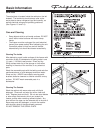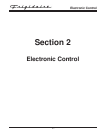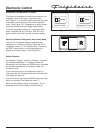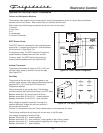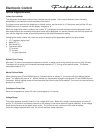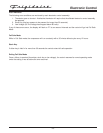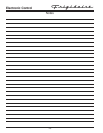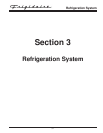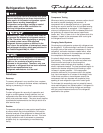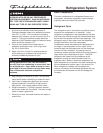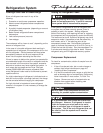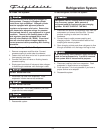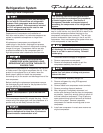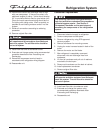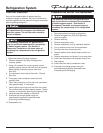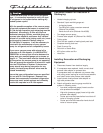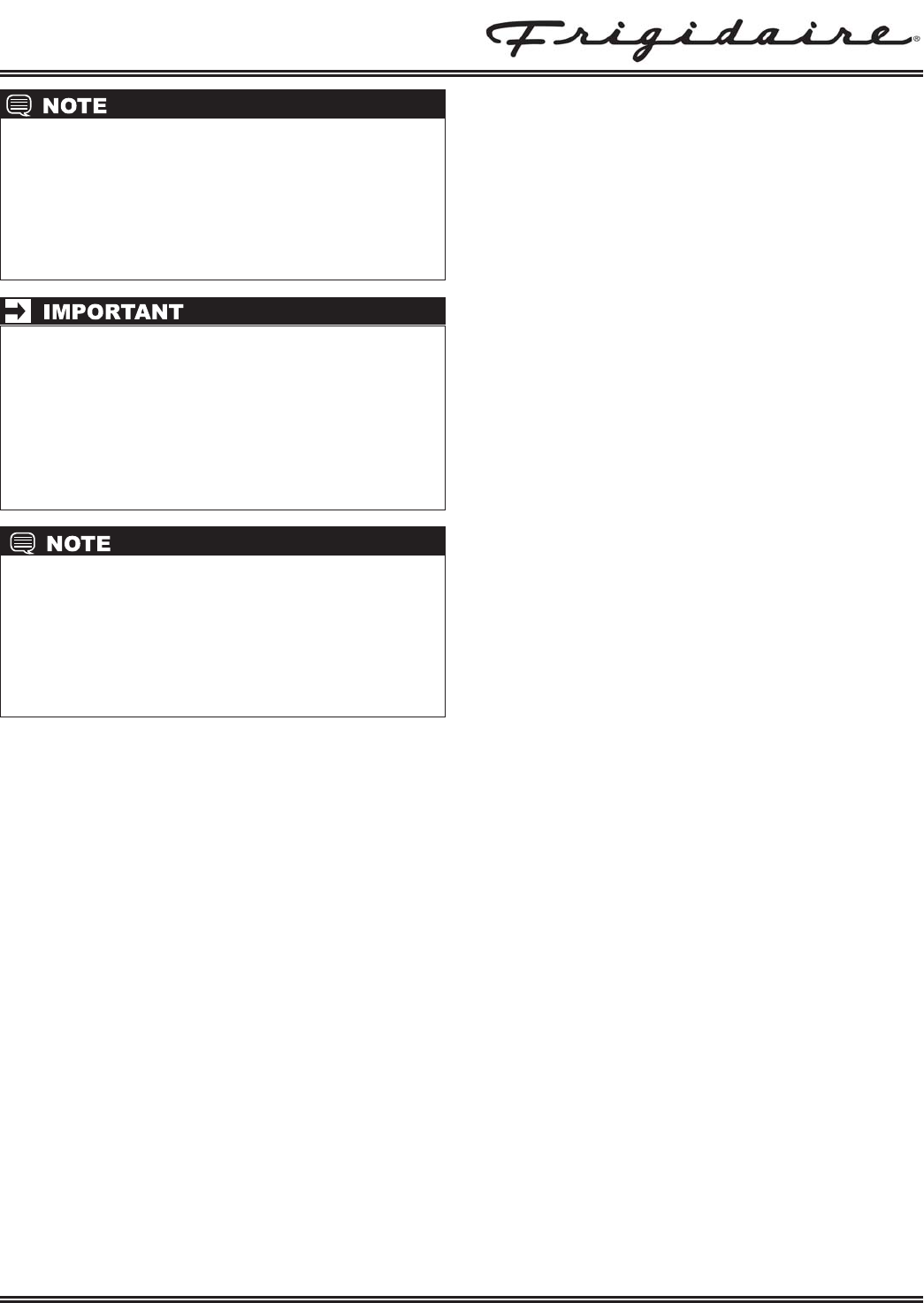
3-2
Refrigeration System
Instructions given here are furnished as a guide.
Persons attempting to use these instructions to
make repairs to the sealed refrigeration system
should have a working knowledge of
refrigeration and previous training on sealed
system repair, and an EPA certification for
servicing refrigeration systems.
The use of recovered refrigerant in the servicing
of products for in-warranty and out-of-warranty
repairs or for products covered by service
contracts is not permitted. Therefore, only new
refrigerant or refrigerant that has been reclaimed
back to new specifications by a
refrigerant manufacturer is to be used.
Effective July 1, 1992, the United States clean air
act governs the disposal of refrigerants such as
R-134a. Therefore, when discharging or purging
the sealed system use an EPA approved
refrigerant recovery system as outlined in the
final rule on the protection of stratospheric ozone
and refrigerant recycling, which was published in
the Federal Register May 14, 1993.
Definitions
Recovery:
To remove refrigerant in any condition from a system
and store it in an external container without necessarily
testing or processing it in any way.
Recycling:
To clean refrigerant for reuse by oil separation and
single or multiple passes through devices, such as
replaceable core filter-driers, which reduce moisture,
acidity and particulate matter. This term usually applies
to procedures implemented at the field job site or at a
local service shop.
Reclaim:
To reprocess refrigerant to new product specifications
by means which may include distillation, will require
chemical analysis of the refrigerant to determine that
appropriate product specifications are met. This term
usually implies the use of processes or procedures
available only at a reprocessing or manufacturing
facility.
Safety Warnings
Compressor Testing
Whenever testing a compressor, extreme caution should
be used to prevent damaging the terminals. A
compressor with a damaged terminal or a grounded
winding can expel a terminal from its insulated housing
when the compressor is energized. If this happens, a
mixture of refrigerant and oil will be released that could
be ignited by an external heat source (open flame,
heater, etc.). Also, if there is air in the system when this
happens, a spark at the compressor shell could ignite
the refrigerant and oil mixture.
Charging Sealed Systems
Overcharging a refrigeration system with refrigerant can
be dangerous. If the overcharge is sufficient to immerse
the major parts of the motor and compressor in liquid
refrigerant, a situation has been created which, when
followed by a sequence of circumstances can lead to
the compressor shell seam separating.
A hydraulic block occurs, preventing the compressor
from starting. This condition is known as locked rotor.
Electric current continues to flow through the
compressor motor windings which become, in effect,
electric resistance heaters. The heat produced begins to
vaporize the excess refrigerant liquid causing a rapid
increase in system pressure. If the compressor
protective devices fail, the pressure within the system
may rise to extremes far in excess of the design limits.
Under these conditions, the weld seam around the
compressor shell can separate with explosive force,
spewing oil and refrigerant vapor which could ignite.
To eliminate this exceedingly rare but potential hazard,
never add refrigerant to a sealed system. If refrigerant is
required, evacuate the existing charge and recharge
with the correct measured amount of the refrigerant
specified for the system.



